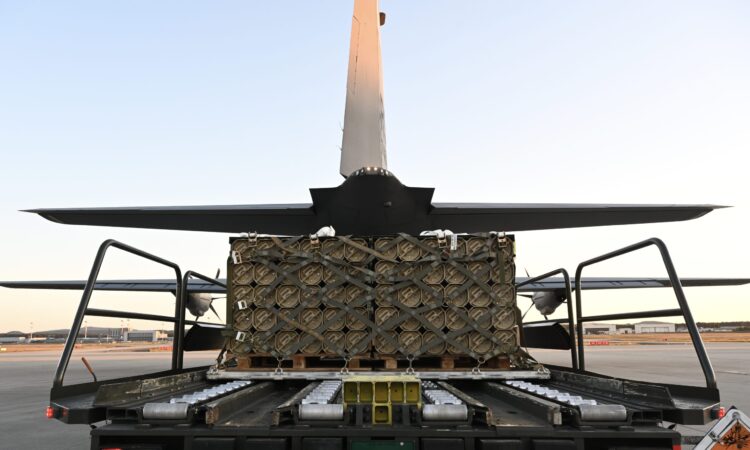
NATO’s supply chain vulnerabilities need to be mitigated. One solution stands out – blockchain.
Russia’s invasion of Ukraine exposed NATO’s supply chain vulnerabilities. The alliance struggled to rearm Ukraine, to line up training and equipment deliveries, to mitigate duplicate and missing deliveries, track information from providers, and to deter Russian hacking.
The lesson is clear: NATO needs to increase supply chain traceability and security. A new Georgia Tech study examined the available options and found that blockchain offers the best remedy.
Blockchain chains together data blocks via mathematical codes. Data is accessible to all members at any time and if any one member wants to change the data, all must agree. It is much more difficult to hack than a centralized ledger where one point of access allows a user to change the entire system. Blockchain’s most popular application, Bitcoin, has never been hacked despite its fame and value, and blockchain applications range from digital currency to financial transactions, supply chains, and even healthcare and insurance.
Many NATO members have already invested in blockchain exploration. The US Air Force awarded blockchain-based startup SIMBA Chain $30 million in 2017 to work on integrating blockchain into military supply chains for the end-to-end verification of military parts. The European Union launched a project in 2021 to develop a transparent way of tracking the sustainability of critical mineral supply chains.
NATO’s adversaries have also demonstrated interest in the technology. China launched a Blockchain Application Subcommittee as a part of its 2021 five-year plan.
Get the Latest
Sign up to receive regular emails and stay informed about CEPA’s work.
Ukraine is a good place to evaluate different technologies. We began by evaluating a number of possible technological solutions for the alliance’s supply chain problems. These included digital databases to track information, radio frequency identification (RFID) tags, QR codes, and blockchain.
Digital databases were shown to be a good first step in transitioning from paper, but not sufficient. While RFID/QR codes are common and widely accepted, they are insecure and easily counterfeited.
Blockchain was the most secure and transparent solution, but requires a high level of technological proficiency. It also carries the stigma of being an overhyped technology thanks to its use in cryptocurrency. Our team found failed adoptions of blockchain technology in the shipping industry, though they were attributed to the companies concerned rather than the technology.
Adopting blockchain into NATO’s weapons supply chain would not solve all of its problems and would take a long time. Before adoption, the alliance would need to ensure it has a good digital foundation for its weapons supply chain and access to all its lower-tier supplier information.
Members would need to be on board with the use of such a controversial technology, which would mean education workshops for stakeholders and workforce training.
The next step would be to find a trusted private sector partner. Our research suggested Hyperledger would be the best place to start since it is the most advanced, customizable, and already used by governments including the US.
If it does adopt blockchain, NATO would be able to ensure a virtually impenetrable and transparent supply chain. In a world of increasing great power competition and the potential for quantum computers to decrypt traditional security measures, blockchain would be well worth the investment.
Emili Sabanovic is currently an International Affairs, Science and Technology PhD Student at Georgia Tech and serves as an Associate Researcher at the RAND Corporation.
This article was based on the research and analysis carried out by a DTI Course 2022-2023 team made up of Anais Acree, Ainsley Brown, Dennis Murphy, and Emili Sabanovic.
Research was overseen by Nicholas Nelson, the DTI Course convener, and a Lecturer and Research Fellow at Georgia Tech’s Sam Nunn School of International Affairs, and Senior Fellow for Emerging Tech & Policy at CEPA.
Bandwidth is CEPA’s online journal dedicated to advancing transatlantic cooperation on tech policy. All opinions are those of the author and do not necessarily represent the position or views of the institutions they represent or the Center for European Policy Analysis.
Read More From Bandwidth
CEPA’s online journal dedicated to advancing transatlantic cooperation on tech policy.






